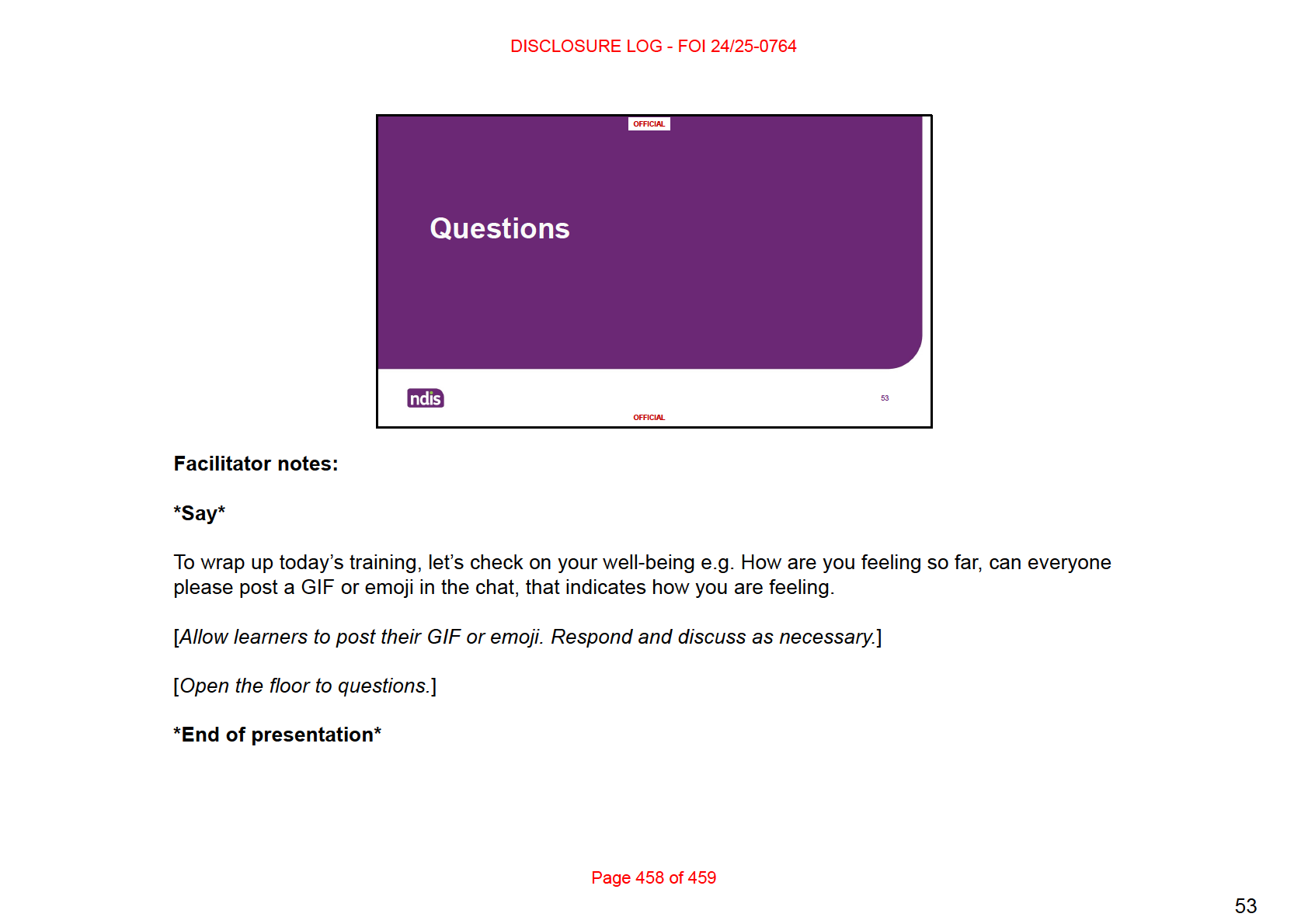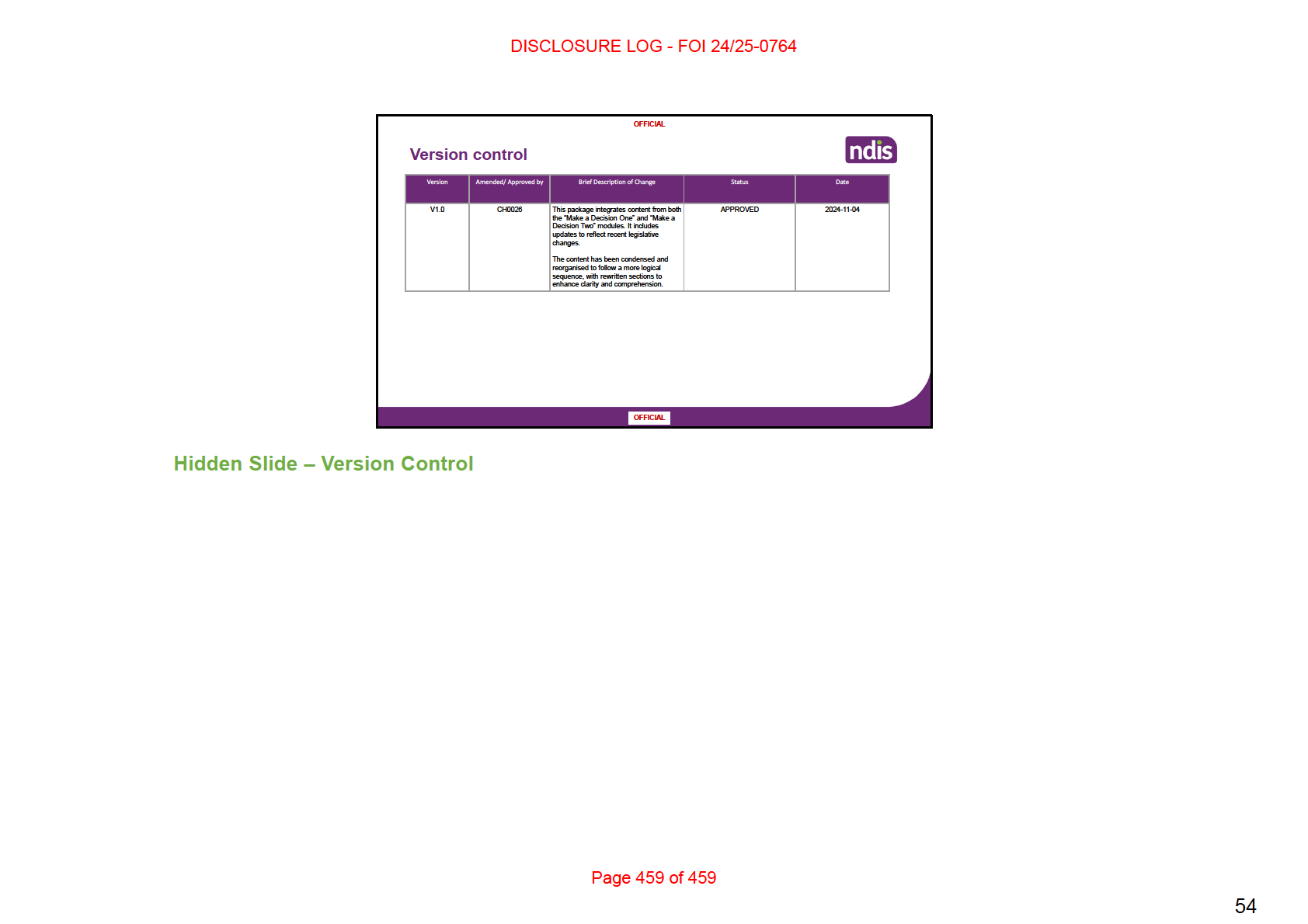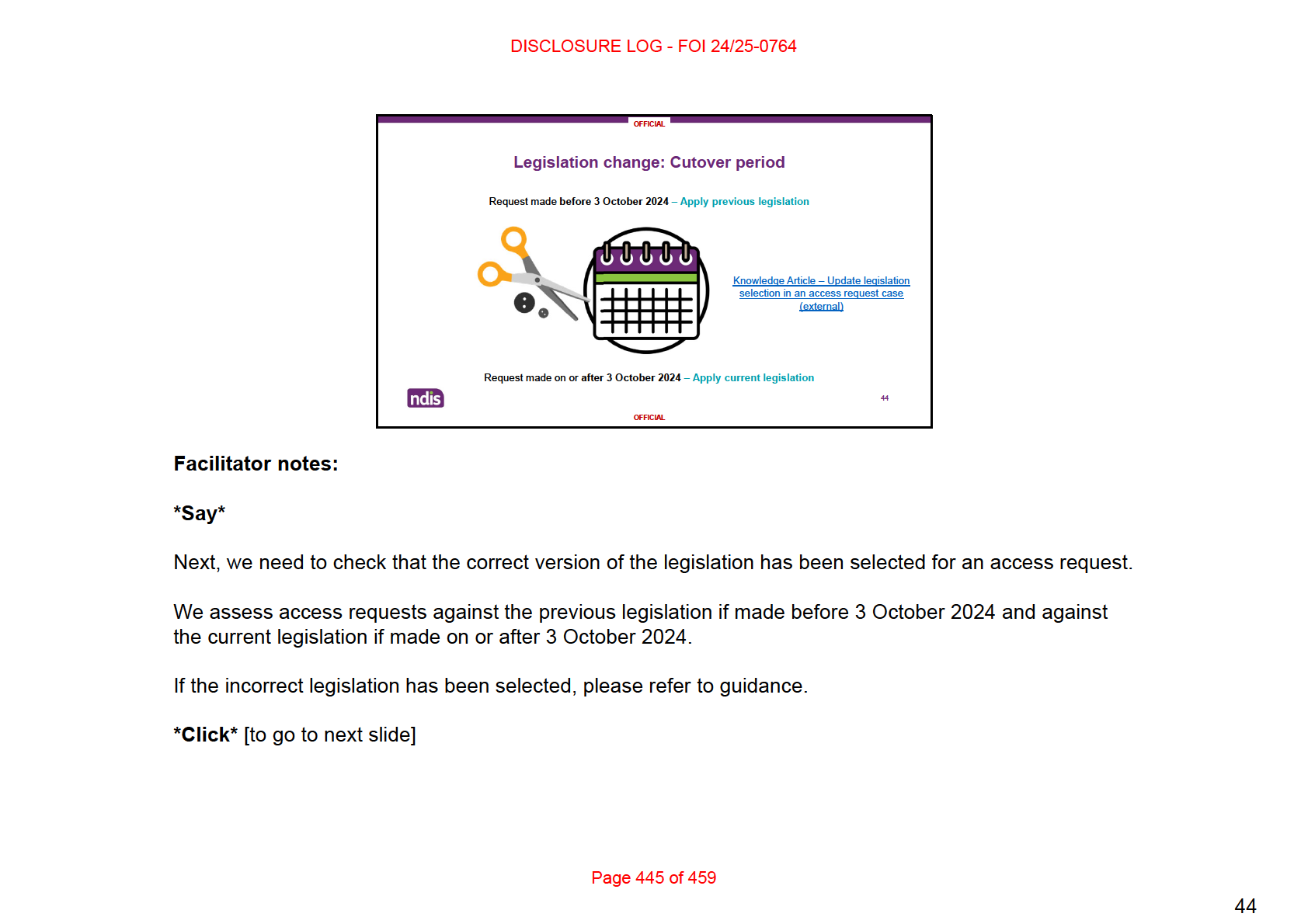
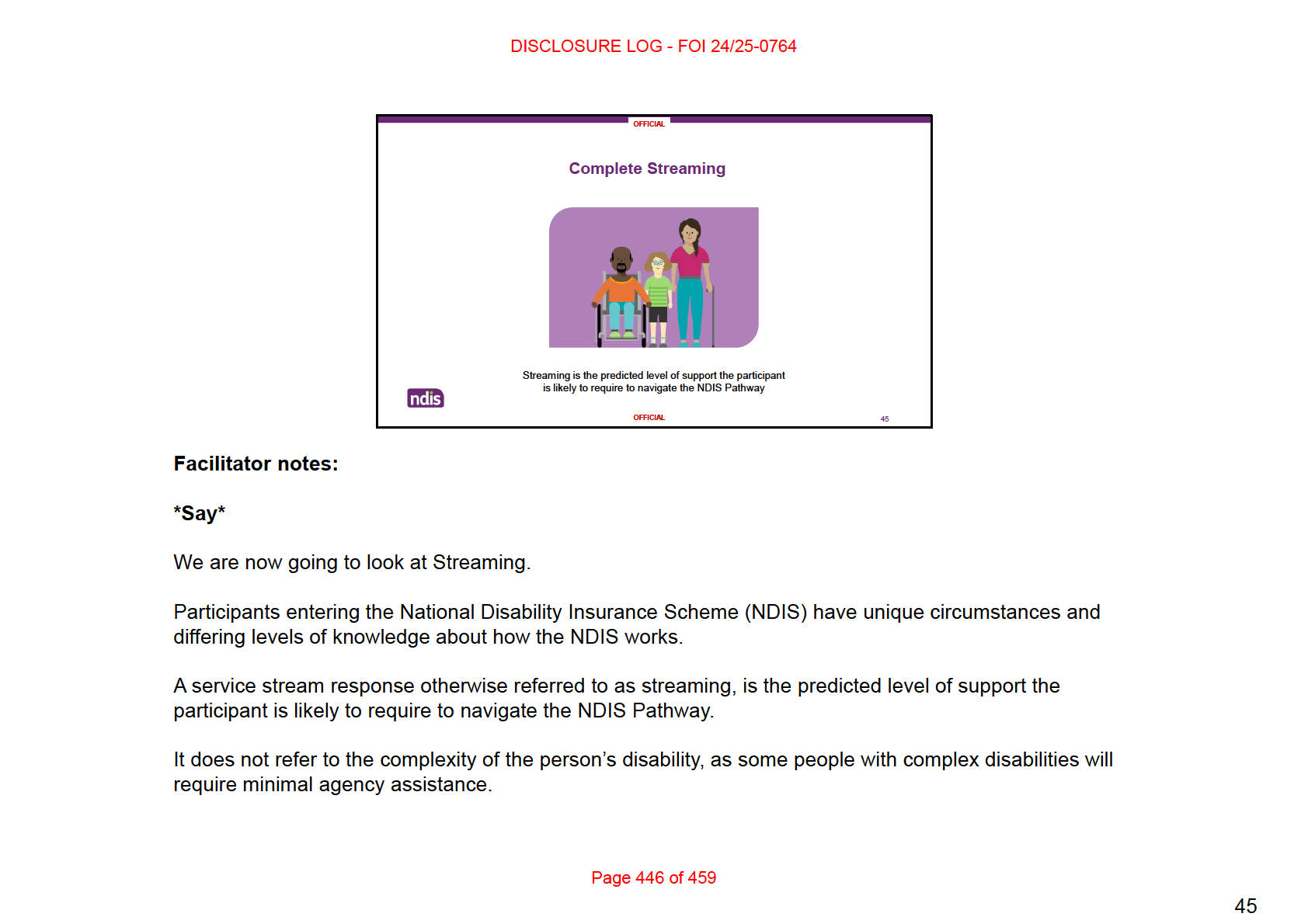
The term streaming is
for internal use only.
*Click* [to go to next slide]
Page 447 of 459
45
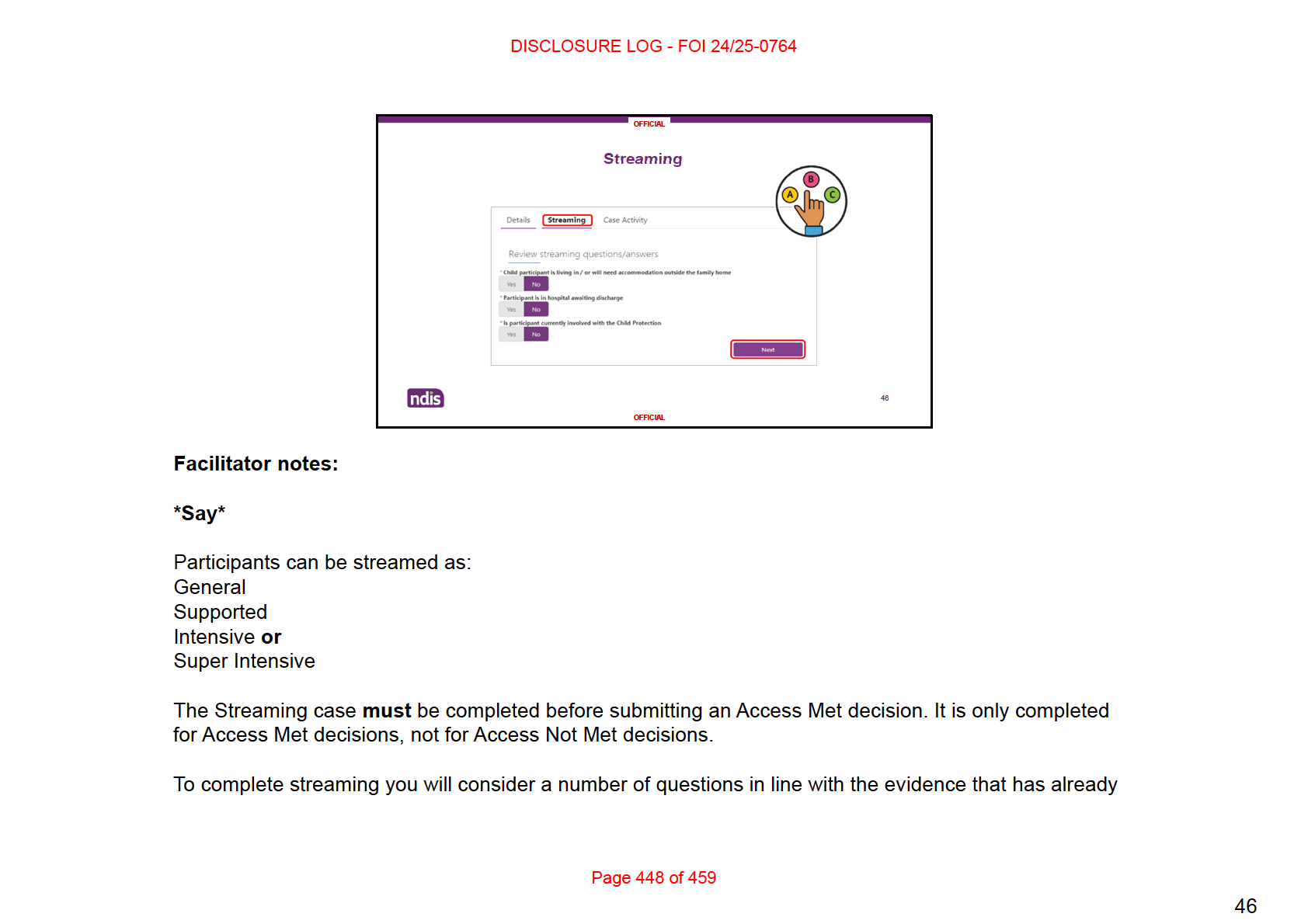
been provided about the participant. On the slide you can see a screenshot of what this looks like in PACE.
The answers to these questions will then help the system to calculate a recommended streaming option.
The Partner will have created a Streaming case. When you are completing a Streaming case, you may need to
change the recommended level of streaming or simply leave it as it already is.
This process is explained in greater detail in the relevant Knowledge Article.
It is important to complete this task correctly, as it is used to determine what support a participant requires to
engage with the NDIS.
If you are unsure about how to answer any particular question based on information that you have, you can
check with your Team Leader.
It is important that you complete the Streaming case prior to making an Access Met decision. This will ensure
that it progresses correctly through to the Planning stage, once you have made your decision.
*Click* [to go to next slide]
Page 449 of 459
46

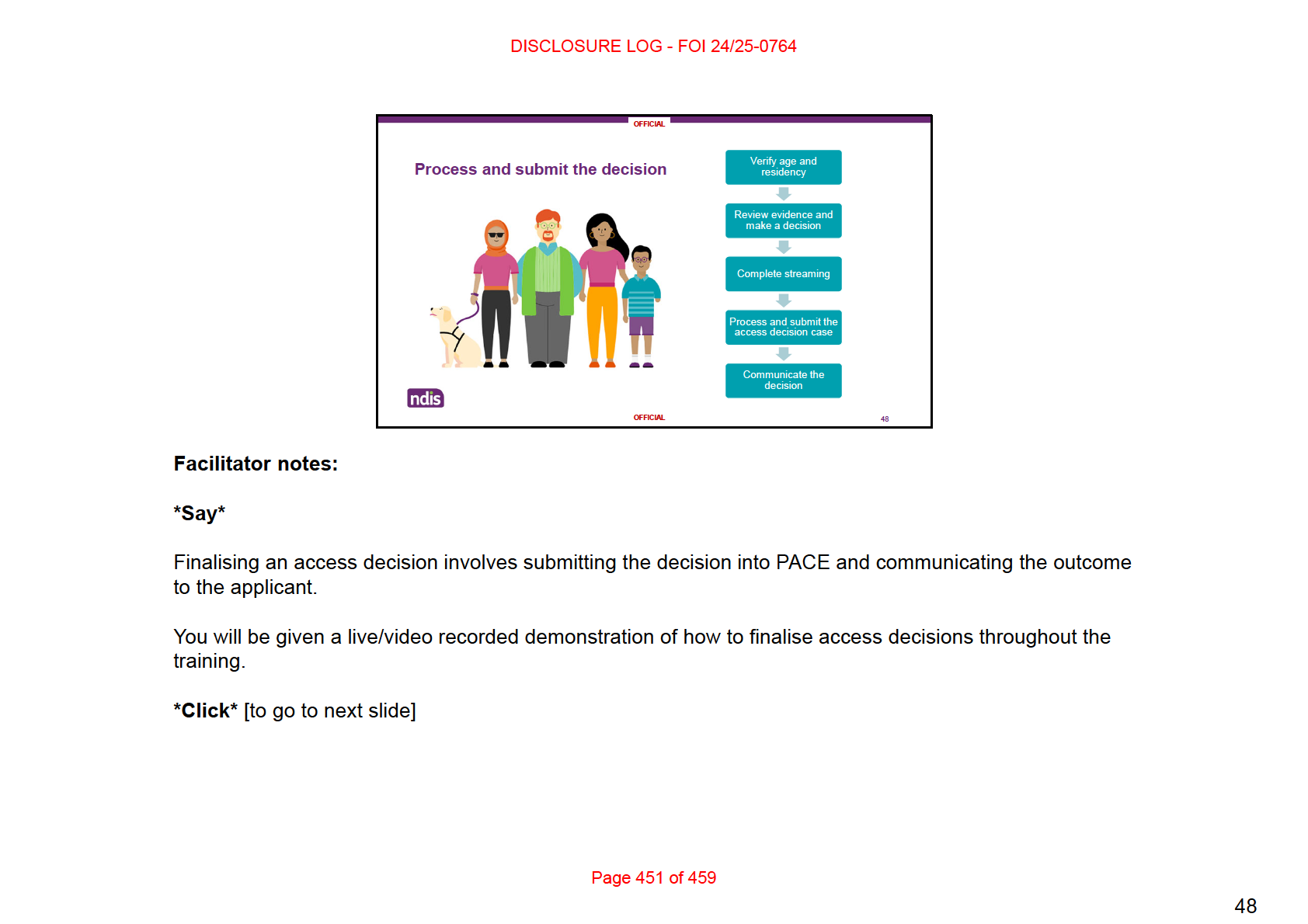
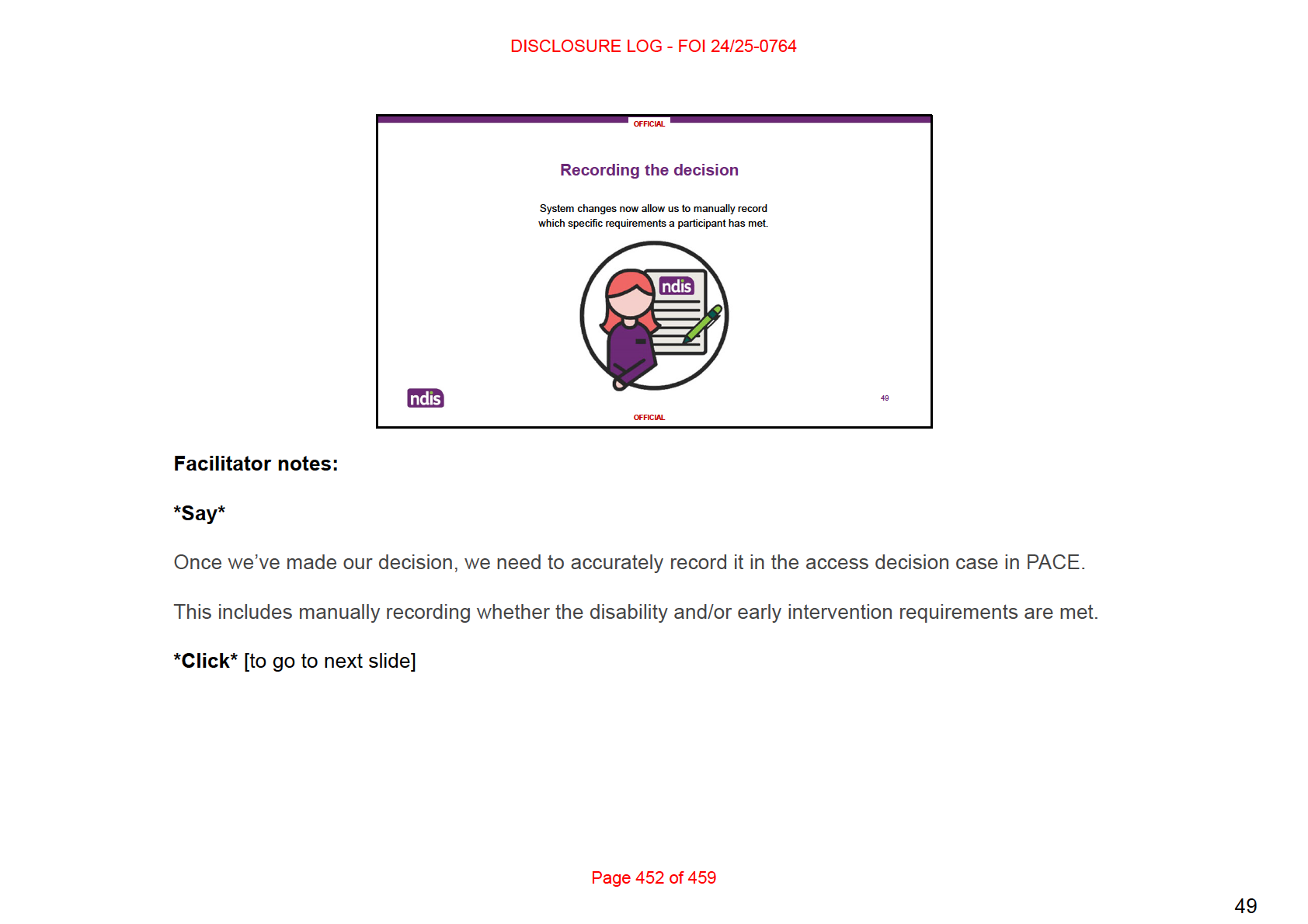
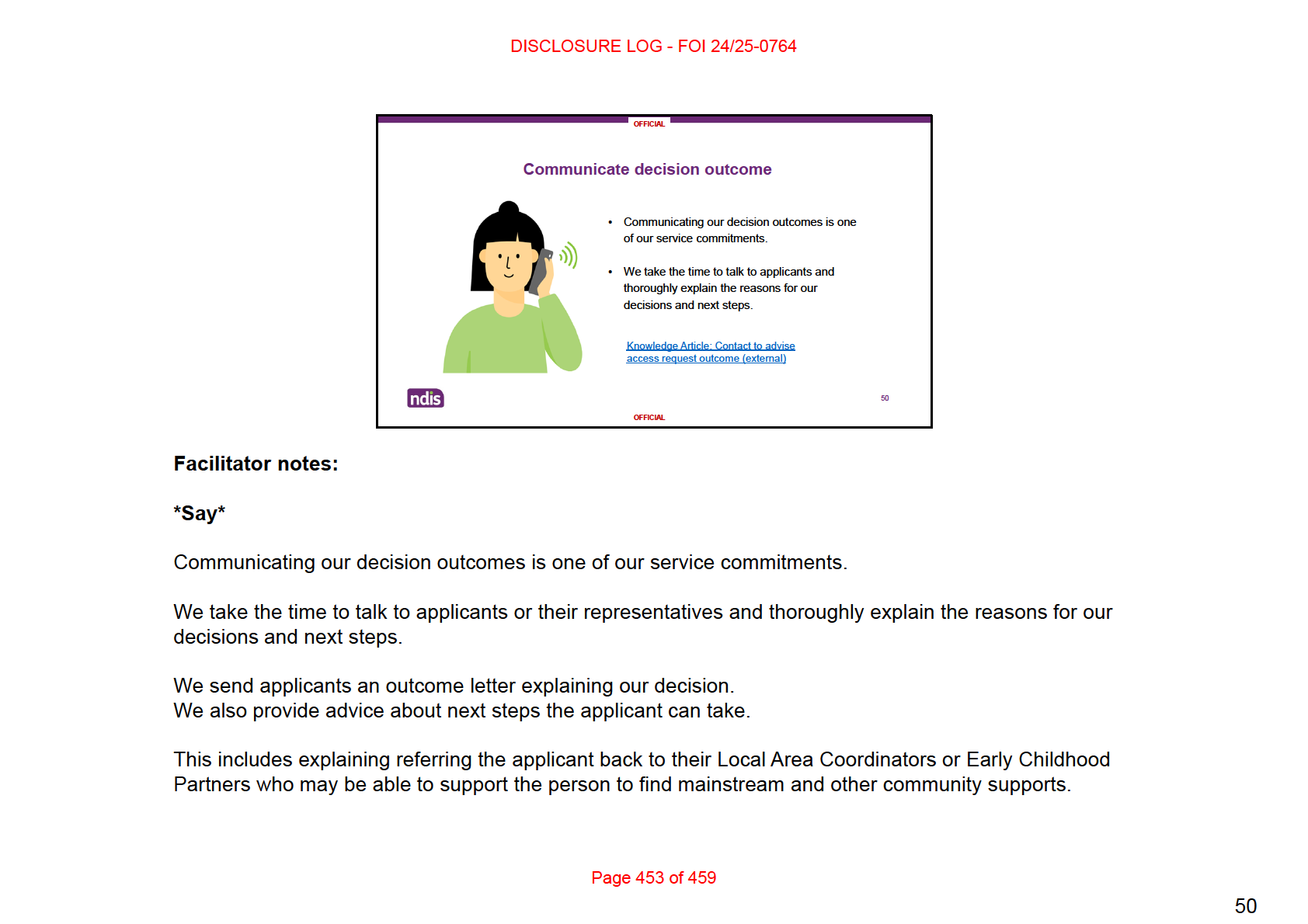
It also involves explaining the person’s review rights.
Different process steps apply to some scenarios and it's important that you refer to the appropriate guidance
before communicating a decision outcome to align with the most up to date requirement. The knowledge article
‘Contact to advise access request outcome’ is useful to refer to before communicating a decision outcome.
We will look more closely at review rights in a moment.
*Click* [to go to next slide]
Page 454 of 459
50
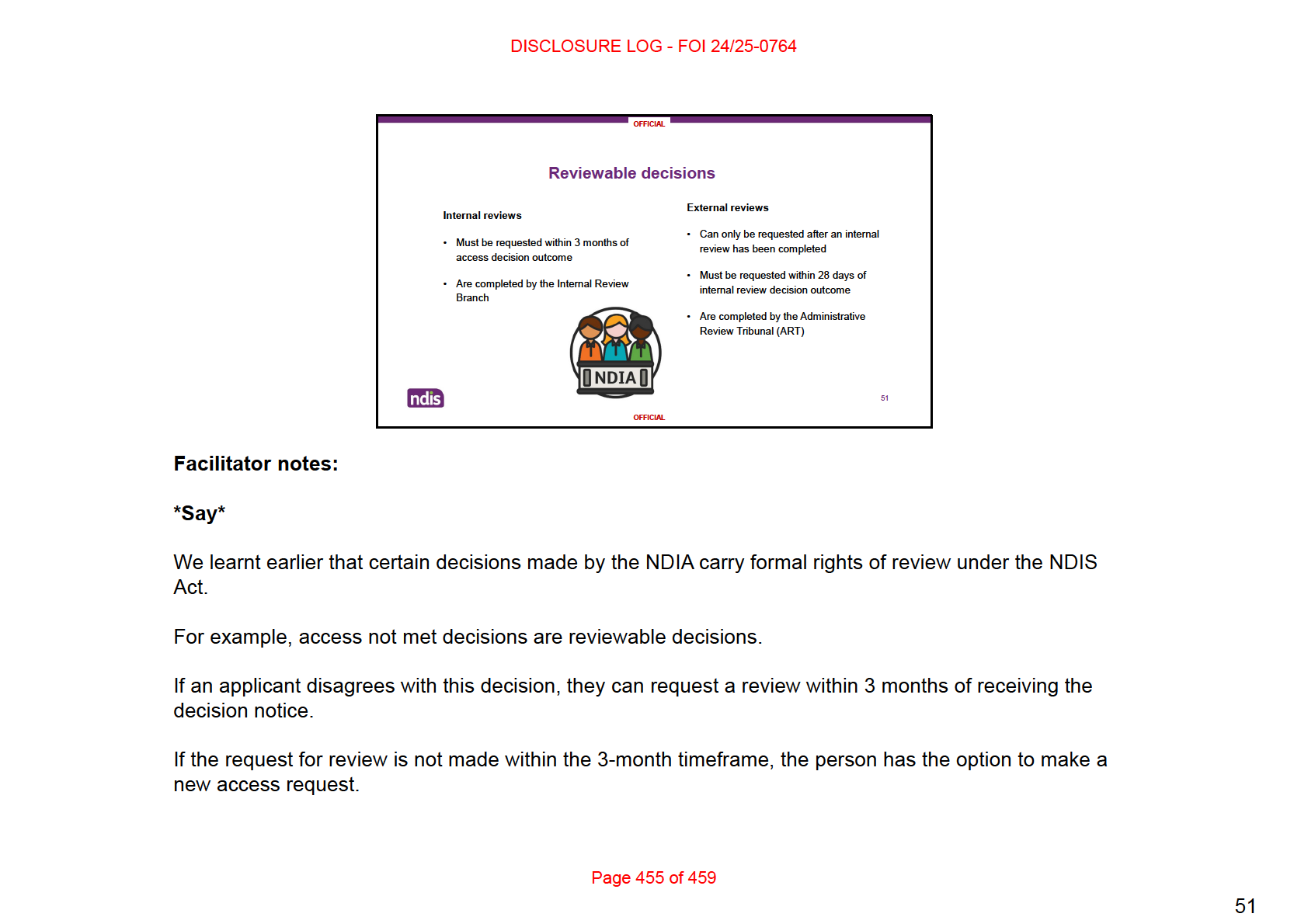
The Access Internal Review Team of the Internal Review Branch handles internal reviews of access decisions.
If the applicant still disagrees after the internal review, they can request an external review by the Administrative
Review Tribunal (ART).
However, they must first complete the internal review process. Applicants have 28 days to request an external
review after receiving the internal review decision notice.
*Pause*
When you make the “access not met” phone call, it’s your responsibility to explain these review rights to the
applicant.
Note that if a person meets access for one impairment but not for another, this decision is not reviewable.
We make one overall access decision, and declining another impairment does not qualify for review.
This is because an overall “access met” decision is not reviewable.
*Click* [to go to next slide]
Page 456 of 459
51

